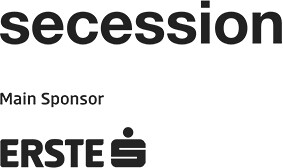Sarah Rapson: Ode to Psyche
Nora Turato: ri-mEm-buhr THuh mUHn-ee
November 20, 2021–January 23, 2022
Friedrichstraße 12
1010 Vienna
Austria
Hours: Tuesday–Sunday 10am–6pm
T +43 1 587530710
F +43 1 587530734
presse@secession.at
Nairy Baghramian
Breath Holding Spell
In art that typically takes the (fragmented) human body as its point of departure, Nairy Baghramian grapples with the fundamental questions of art production: with the interrelations between production and reception, between picture and frame, between object and pedestal, for example, but also with the use of materials and the work’s interaction with the everyday. In site-responsive installations, sculptures that appear fragile, obviously in need of support, drawings, and photographic works, the artist takes a stand against the conventional pose of self-confidence, the dominant creative gesture, and its claim to perpetual validity.
Her formal idiom, choice of materials, and approach have as much in common with post-minimalism as with conceptual art; the artist harnesses the potential of abstraction to address complex sets of questions and frame a suitable response in terms of aesthetic form, forging what Baghramian herself has described as “ambivalent abstraction.” Her work addresses temporal, spatial, and social relations to language, history, and the present through forms that materialize as responses to contextual conditions or the premises of a particular medium.
Her creations for interior as well as exterior settings often consist of multiple elements and disparate materials such as aluminum, glass, pigmented wax, marble, porcelain, cork, and epoxy resin. Organic shapes that are densely packed or imbricated, that buttress, support, or lean on one another, subtly yet unmistakably evince their reliance on one another. Props and clamps further underscore the objects’ correlation or interdependence; no effort is made to camouflage ostensible defects in the works: “My sculptures are supposed to help articulate the doubt concerning their viability.” This stance lays her works open to challenge and assault, while the auxiliary constructions also suggest their conceptual temporariness and alterability.
In her solo exhibition in the Secession’s main hall, Nairy Baghramian presents an installation that responds to the architectural specifics of the setting, featuring sculptures from her series Dwindlers and Breath Holding Spells—from which the exhibition also takes its title—as well as the new wall piece Deep Furrow.
Nairy Baghramian was born in Isfahan in 1971 and lives and works in Berlin.
Sarah Rapson
Ode To Psyche
For Sarah Rapson’s exhibition Ode To Psyche in the basement galleries of the Secession, we have shipped new works of art from England and there may also be film and perhaps some works on paper in this show. There is no subtext to art, it’s not like a dream. It’s a session.
Sarah Rapson was born in London in 1959. She currently works in England and lives in Rome.
Nora Turato
ri-mEm-buhr THuh mUHn-ee
Nora Turato is known for her ability to syphon the textual idiosyncrasies of the internet and new media into her work. She pours language appropriated from books, advertising, social media, and everyday exchanges into sonorous performance scripts and visual works that range from wall murals and videos to artist books and posters.
For her exhibition at the Secession, Turato has produced a new sound installation which grew from her research into the politics of accents and Western media. The piece marks a new direction for the artist, who draws from her own subjecthood and upbringing in the shadow of the Soviet era, where Western media were hungrily consumed, but phonetics, nuance, and meaning were often lost in translation. In the audio piece, Turato can be heard mimicking the sounds of Western speech forms, compulsively grasping for the right tone and articulation of multitudinous accent types from the English language.
ri-mEm-buhr THuh mUHn-ee can be described as a sound study of the artist’s growing vocal arsenal. Through her ongoing engagement with the spoken word, Turato has developed an internal repository of sorts – a cache of accents, dialects, and idiolects, between which she can rapidly alternate and echo in seance-like offerings.
Nora Turato was born in Zagreb in 1991 and lives and works in Amsterdam.
Artists’ books are published in conjunction with each exhibition.
The exhibition program is conceived by the board of the Secession.





